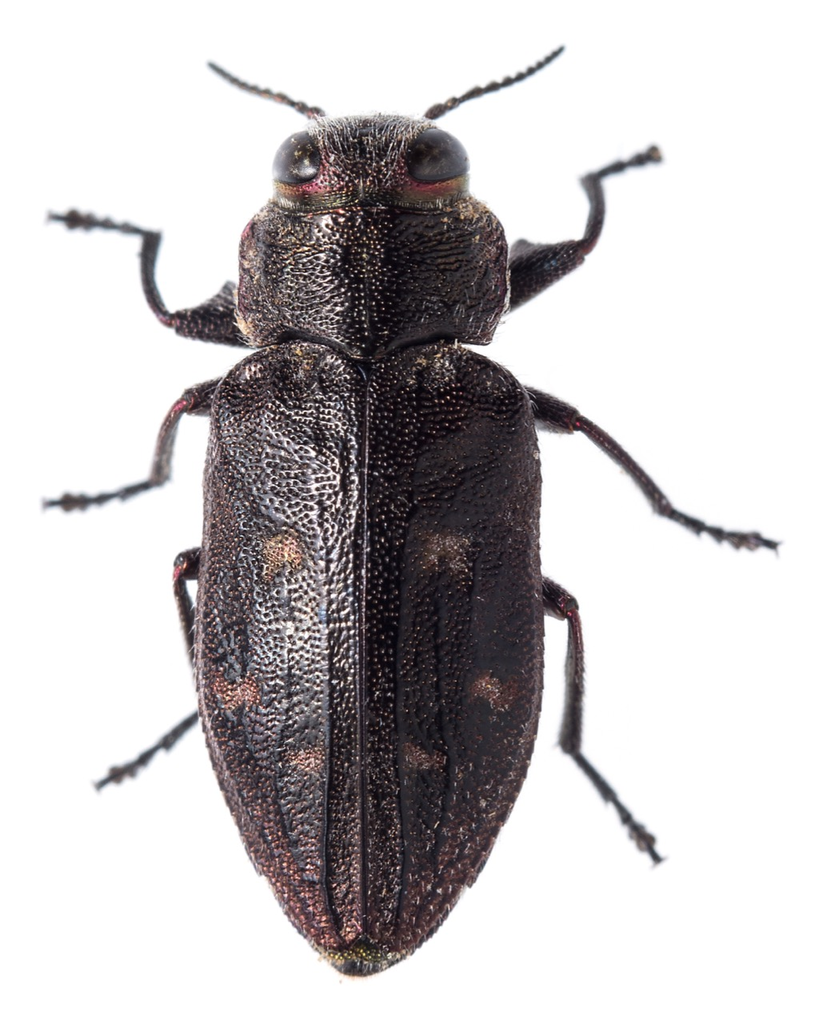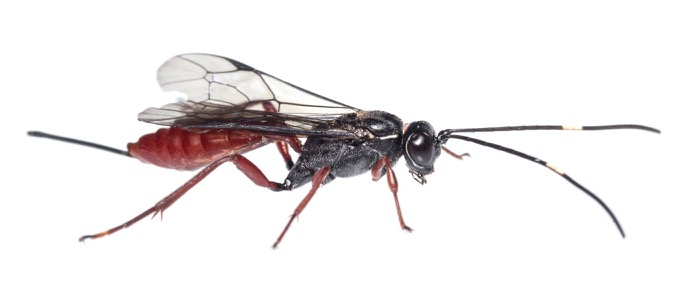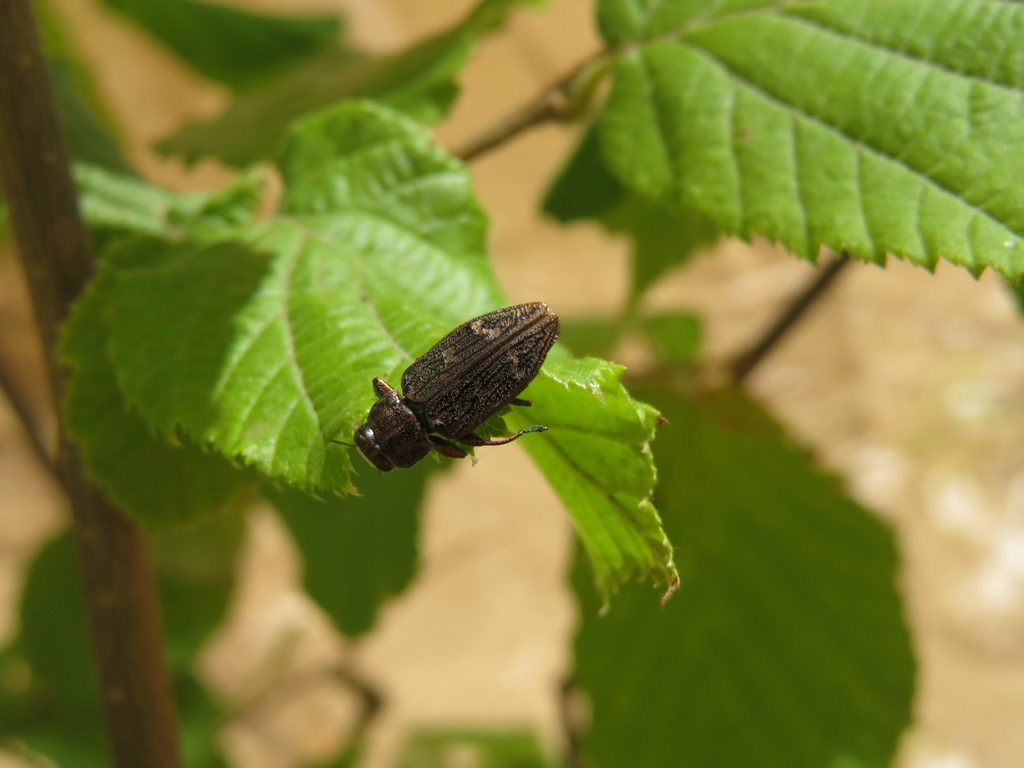Sunburn, graft union or pruning wounds on young walnut trees can all be entry ports for the destructive Pacific flathead borer.
Walnut and hazelnut trees are just two of the major plant species targeted by PFB, Chrysobothirs mali, a pest beetle with a larval stage that bores into trees and feeds on the cambium layer, killing or weakening the tree. Newly planted walnut and hazelnut trees are most vulnerable to infestations of this pest, though there are more than 200 known host plants. Besides walnut and hazelnut trees, fruit trees and berry vines can become infested with PFB. Shade and ornamental trees are also targets.
Jhalendra Rijal, UCCE area integrated pest management specialist in Stanislaus County, has observed a number of PFB infestations in young walnut orchards in the Central Valley. He said PFB is not an invasive pest and has been in the state for a long time. Pacific flathead borer infestations have also been found in mature walnut trees due to openings from pruning wounds or equipment damage. Rijal said those infestations might go unnoticed or have symptoms attributed to another cause unless growers are looking specifically for the distinctive larvae.
Rijal reported that he observed more than 10 walnut orchards with PFB infestations last fall, in San Joaquin, Stanislaus, and Merced counties. Infested trees were from first-year plantings to mature orchards and in different varieties. PCAs and growers reported PFB in walnut orchards in other counties as well, as far south as Tulare County.
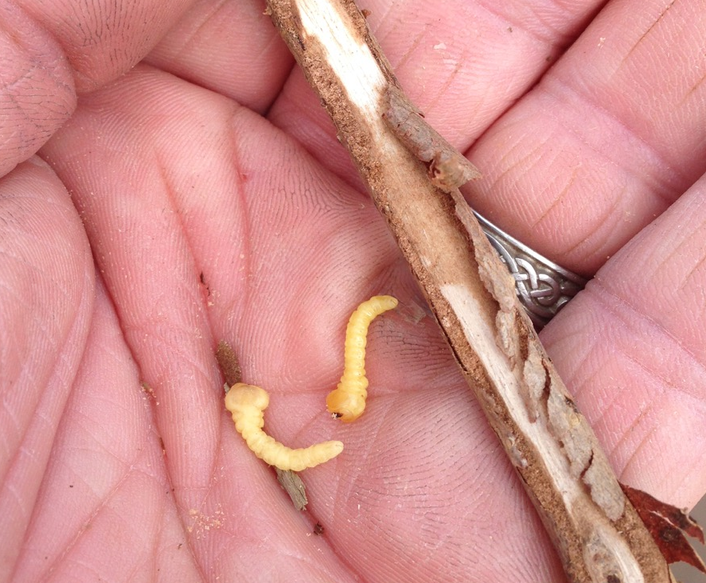
Monitor for the Pest or Symptoms
When PFB is suspected as the cause of weak or dead limbs in older orchards, monitor for PFB by looking for water soaked areas on the bark. Larval feeding will cause the bark to split and frass-filled feeding areas can become exposed. Tree limbs affected by PFB feeding should be cut out and removed from the orchard as they can serve as an overwintering site.
Pacific Northwest Pest Management Handbook notes that symptoms of borer-infested trees include excessive wilting, yellowing and other signs of stress in individual trees during hot periods. Borer larvae have already done most of their damage by the late summer and the symptoms of girdling will be most apparent in the leaves and appearance of the tree at that time. Trees that are exhibiting these symptoms should be examined for borer damage starting at the soil line and up the trunk to a height of approximately 2.5 feet. If the stresses of a partial girdle do not kill the tree, then there are serious risks that tree limbs will ultimately snap off as the tree grows top heavy and begins to put on a nut crop.
Mature PFB larvae are about ¾-inch in length and whitish colored. The body is flat and the head is amber colored. The larvae have a broad flat area behind the head and the body tapers toward the posterior. According to UC IPM Guidelines, nearly the entire larval state is spent feeding in the cambium layer of the bark. Later in the fall, larvae tend to move inside the heartwood of the twigs and branches. Adults are metallic reddish bronze beetles with copper-color spots on wing covers, and about ¼-inch to ½-inch long. The female is considerably larger than the male. The adult beetle is rarely observed and it is not destructive.
Adult PFB beetles emerge from April until July. Rijal found the majority of the adults emerged mid-June in the northern San Joaquin Valley. After mating, females lay eggs on tree sites that are weak or exposed to the sun. They prefer weak or injured trees. Stressed, newly planted trees are also vulnerable. In older trees with infestations, the structural integrity of the tree can be compromised and limbs are susceptible to breakage or infestation by another pest.
Rijal said there is currently no insecticide treatment for PFB. Although some insecticides targeting other pests such as codling moth, walnut husk fly or others, might have some value in reducing PFB neonates if timing matches with hatching time, there have been no trials on their efficacy against PTB.
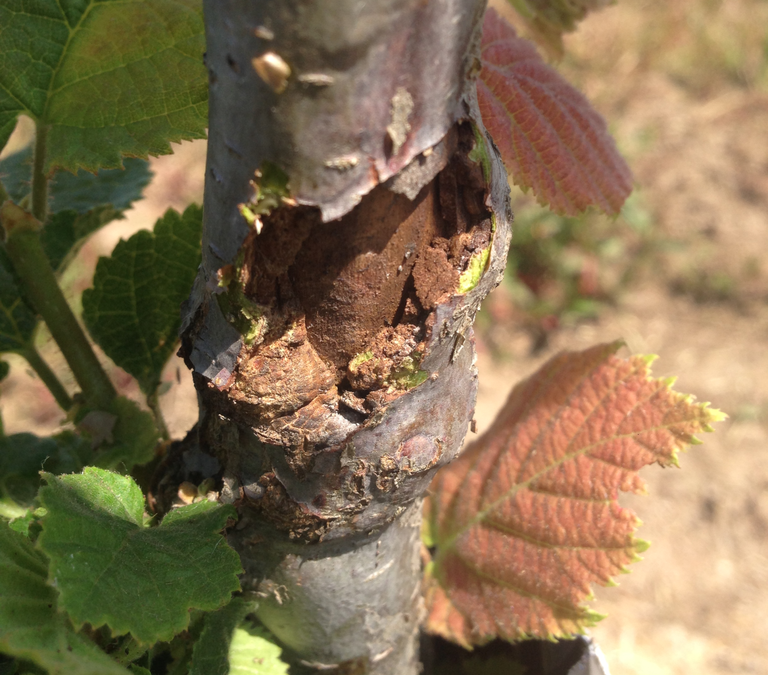
Avoid Stress in the Orchard
Avoiding stress in newly planted walnut trees, through adequate water and nutrition, can minimize chances of a PFB infestation. Research done at Oregon State University found that if the host tree is growing vigorously and full of sap, the PFB larvae cannot thrive inside and will cease feeding.
Sunburn is also a precursor. Because the graft union is often targeted by PFB, OSU research found that positioning the union away from the sun could prevent an infestation. Painting young trees with white wash or a 50-50 mixture of latex paint and water helps prevent sunburn and may inhibit egg laying on the trunks. The trunk should be painted from 2 inches below ground to two feet above. Pruning young trees during the summer months should be avoided as it opens up infestation sites. Tree training should leave scaffolds shaded to prevent sunburn. Horizontal scaffolds should be removed when pruning or thinning.
There are also some biological controls. Birds peck the larvae from under the bark with their beaks. Some wasp parasites attack the borer by drilling the ovipositor through the bark to lay the egg on the flathead borer larvae. Carpenter ants eat both larvae and pupae from the wood. Generalist predatory mites can also feed on overwintering larvae and pupae.
These natural predators and cultural controls to avoid stress can help minimize impacts of Pacific flathead border. Ultimately, though, Rijal said, more research on controlling this economically damaging pest is needed.
